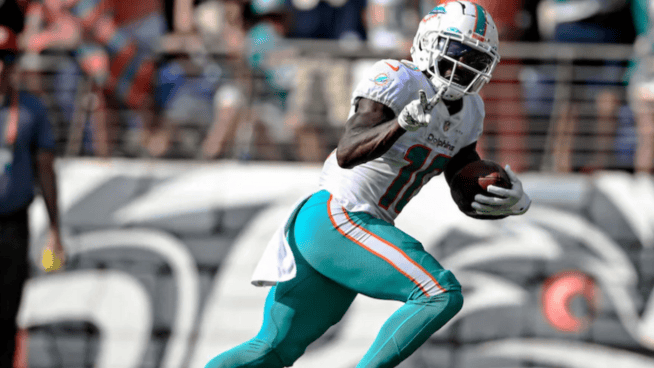Rules Your Off-Season Training Plan Must Follow
Before we get into the things you must do to become a better athlete before next season, let’s start with some important distinctions.
Speedwork is different from conditioning. Speedwork develops exactly that—speed, the ability to move from point A to point B as quickly as possible. Conditioning refers to the ability to move without getting winded.
Speed is strength—you need to be strong to move fast. But there are three different kinds of strength: absolute strength, the ability to lift a really heavy object; speed strength, the ability to move a weight as fast as possible; and repetitive strength, the ability to perform a movement over and over.
Each type of strength requires a different approach for development. You build absolute strength by using sets of 3 reps or less, often going with single reps at max or near-max weight. Speed strength is built through sets of 2 to 3 reps for 6 to 8 sets with short rest intervals between sets. And repetitive strength is built by working with moderate weights and high reps (15 or more per set) for 4 to 5 sets.
See how the resistance and number of repetitions vary depending on your goal? Performing too many reps changes an exercise from an absolute strength builder to repetitive strength work.
The same rule applies to speed drills and conditioning. Run too far, and you’re no longer working on speed or acceleration. It’s conditioning.
Same thing with footwork: If you take inadequate rest between drills, and you won’t be improving your footwork; you’ll be developing your conditioning.
And although conditioning is great, there’s a time and a place for it. Just like there’s a time to work on becoming a more powerful athlete, and a time to work on sport-specific skills. You can’t really do all three at once. So you need to plan correctly.
That’s what I’m here to teach you. At my gym, Ultimate Advantage, I build stronger, faster, more powerful athletes for a living.
When setting up your off-season training program, from the time your season ends until eight weeks out from the start of your next season, you do not need to make footwork or conditioning a priority. You need to focus on getting stronger in areas that translate to better on-field performance—mainly the hamstrings, glutes and hips. You also need to work your upper body, focusing on compound barbell pressing movements that engage your arms, shoulders and chest.
You should work your core all year ’round.
In the early part of the off-season, focus on absolute strength and speed strength. Don’t worry about running or conditioning. You need that energy and recovery ability to put more horsepower into your muscles. That will allow you develop a faster first step—and more speed overall.
In your strength phase, spend two days working absolute strength, one day for upper body and one day for lower body. The other two days should be a mix of speed strength and repetitive strength work. Remember: This is your time to get strong. Your plan each week should look like this:
Day 1: Max Upper-Body Work
Aim to build max strength by working up to a 1-rep max (1RM) with a compound barbell movements. Perform sets of 3 reps until you can’t do all 3, then drop to 2 reps for two or three, then some heavy singles. Follow that with moderate rep work (6-12 per set) on your triceps, lats and upper back, performing 3-5 sets of each exercise.
Day 2: Speed Strength
Work with lower weights (45% to 50% of 1RM) and focus on bar speed and repetitions while maintaining form. Also perform exercises targeting your posterior chain—your hamstrings, hips and glutes.
Day 3: Rest
Do some dynamic mobility work if desired. (Personally, I just rest.)
Day 4: Speed and Rep Strength
Use the same guidelines as Day 2, but work on your upper body rather than your lower half.
Day 5: Max Lower-Body Work
Work your way up to a single max attempt on a compound lower-body movement (like Squats or Deadlifts). Same template as Day 1.
Roughly 6 or 7 weeks out from the start of the season, start the transition from speed strength to foot skills and drills for speed, control and conditioning. If you start before that, you’ll be wasting your time and not optimizing your program properly.
Think of your body like a car. It needs horsepower to go fast. You need to spend most of the off-season adding horsepower to your engine. If I’m your coach and I’m having you run gassers 4 months before your first game, I am not helping your horsepower. I am actually hurting it.
Of course, if you’re three weeks out from season and I’m not having you run or do footwork drills, I’m also hurting you.
At seven weeks out from season, switch some of the work on speed days (Days 2 and 4) to footwork and conditioning. Within five weeks of the season, add a third day of footwork and conditioning on a weekend day.
You should be working six days a week during the final four weeks of training. In the last week before season starts, just do field work and no gym work to allow your body time to recover for the practices, scrimmages and games ahead.
When the season begins, footwork, conditioning and sport-specific training become paramount. Your coaches will probably have you doing plenty of work on all three. But they most likely won’t be asking you to do resistance training. It’ll be on you to get into the weight room and maintain the gains you made in the off-season. That requires an entirely different approach, but thankfully, maintaining strength isn’t as hard as gaining strength. Exactly how to do that during the season is the subject of a different article.
Read more:
- Why Power Development Must Come Before Speed Work
- What Athletes Need to Know About Playing D-I Sports
- Master the Conventional Deadlift
RECOMMENDED FOR YOU
MOST POPULAR
Rules Your Off-Season Training Plan Must Follow
Before we get into the things you must do to become a better athlete before next season, let’s start with some important distinctions.
Speedwork is different from conditioning. Speedwork develops exactly that—speed, the ability to move from point A to point B as quickly as possible. Conditioning refers to the ability to move without getting winded.
Speed is strength—you need to be strong to move fast. But there are three different kinds of strength: absolute strength, the ability to lift a really heavy object; speed strength, the ability to move a weight as fast as possible; and repetitive strength, the ability to perform a movement over and over.
Each type of strength requires a different approach for development. You build absolute strength by using sets of 3 reps or less, often going with single reps at max or near-max weight. Speed strength is built through sets of 2 to 3 reps for 6 to 8 sets with short rest intervals between sets. And repetitive strength is built by working with moderate weights and high reps (15 or more per set) for 4 to 5 sets.
See how the resistance and number of repetitions vary depending on your goal? Performing too many reps changes an exercise from an absolute strength builder to repetitive strength work.
The same rule applies to speed drills and conditioning. Run too far, and you’re no longer working on speed or acceleration. It’s conditioning.
Same thing with footwork: If you take inadequate rest between drills, and you won’t be improving your footwork; you’ll be developing your conditioning.
And although conditioning is great, there’s a time and a place for it. Just like there’s a time to work on becoming a more powerful athlete, and a time to work on sport-specific skills. You can’t really do all three at once. So you need to plan correctly.
That’s what I’m here to teach you. At my gym, Ultimate Advantage, I build stronger, faster, more powerful athletes for a living.
When setting up your off-season training program, from the time your season ends until eight weeks out from the start of your next season, you do not need to make footwork or conditioning a priority. You need to focus on getting stronger in areas that translate to better on-field performance—mainly the hamstrings, glutes and hips. You also need to work your upper body, focusing on compound barbell pressing movements that engage your arms, shoulders and chest.
You should work your core all year ’round.
In the early part of the off-season, focus on absolute strength and speed strength. Don’t worry about running or conditioning. You need that energy and recovery ability to put more horsepower into your muscles. That will allow you develop a faster first step—and more speed overall.
In your strength phase, spend two days working absolute strength, one day for upper body and one day for lower body. The other two days should be a mix of speed strength and repetitive strength work. Remember: This is your time to get strong. Your plan each week should look like this:
Day 1: Max Upper-Body Work
Aim to build max strength by working up to a 1-rep max (1RM) with a compound barbell movements. Perform sets of 3 reps until you can’t do all 3, then drop to 2 reps for two or three, then some heavy singles. Follow that with moderate rep work (6-12 per set) on your triceps, lats and upper back, performing 3-5 sets of each exercise.
Day 2: Speed Strength
Work with lower weights (45% to 50% of 1RM) and focus on bar speed and repetitions while maintaining form. Also perform exercises targeting your posterior chain—your hamstrings, hips and glutes.
Day 3: Rest
Do some dynamic mobility work if desired. (Personally, I just rest.)
Day 4: Speed and Rep Strength
Use the same guidelines as Day 2, but work on your upper body rather than your lower half.
Day 5: Max Lower-Body Work
Work your way up to a single max attempt on a compound lower-body movement (like Squats or Deadlifts). Same template as Day 1.
Roughly 6 or 7 weeks out from the start of the season, start the transition from speed strength to foot skills and drills for speed, control and conditioning. If you start before that, you’ll be wasting your time and not optimizing your program properly.
Think of your body like a car. It needs horsepower to go fast. You need to spend most of the off-season adding horsepower to your engine. If I’m your coach and I’m having you run gassers 4 months before your first game, I am not helping your horsepower. I am actually hurting it.
Of course, if you’re three weeks out from season and I’m not having you run or do footwork drills, I’m also hurting you.
At seven weeks out from season, switch some of the work on speed days (Days 2 and 4) to footwork and conditioning. Within five weeks of the season, add a third day of footwork and conditioning on a weekend day.
You should be working six days a week during the final four weeks of training. In the last week before season starts, just do field work and no gym work to allow your body time to recover for the practices, scrimmages and games ahead.
When the season begins, footwork, conditioning and sport-specific training become paramount. Your coaches will probably have you doing plenty of work on all three. But they most likely won’t be asking you to do resistance training. It’ll be on you to get into the weight room and maintain the gains you made in the off-season. That requires an entirely different approach, but thankfully, maintaining strength isn’t as hard as gaining strength. Exactly how to do that during the season is the subject of a different article.
Read more:
- Why Power Development Must Come Before Speed Work
- What Athletes Need to Know About Playing D-I Sports
- Master the Conventional Deadlift













